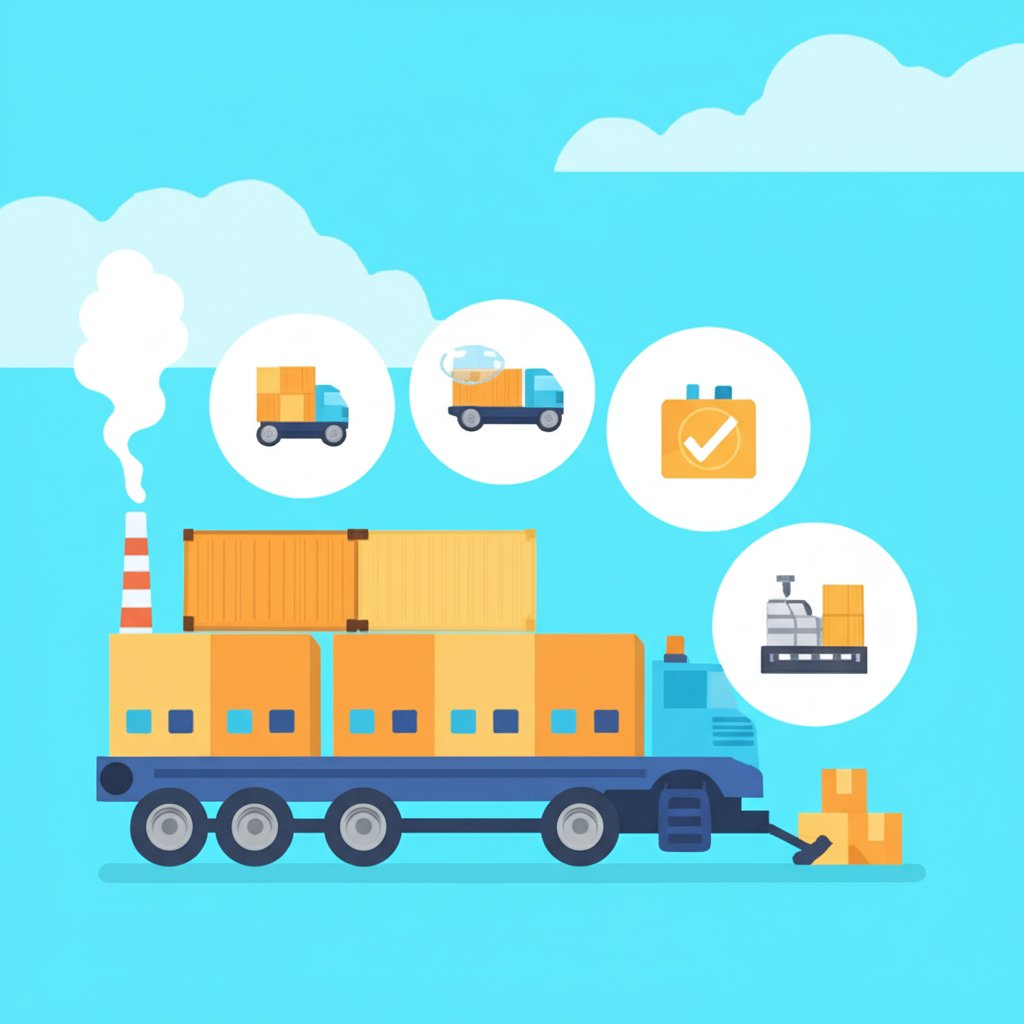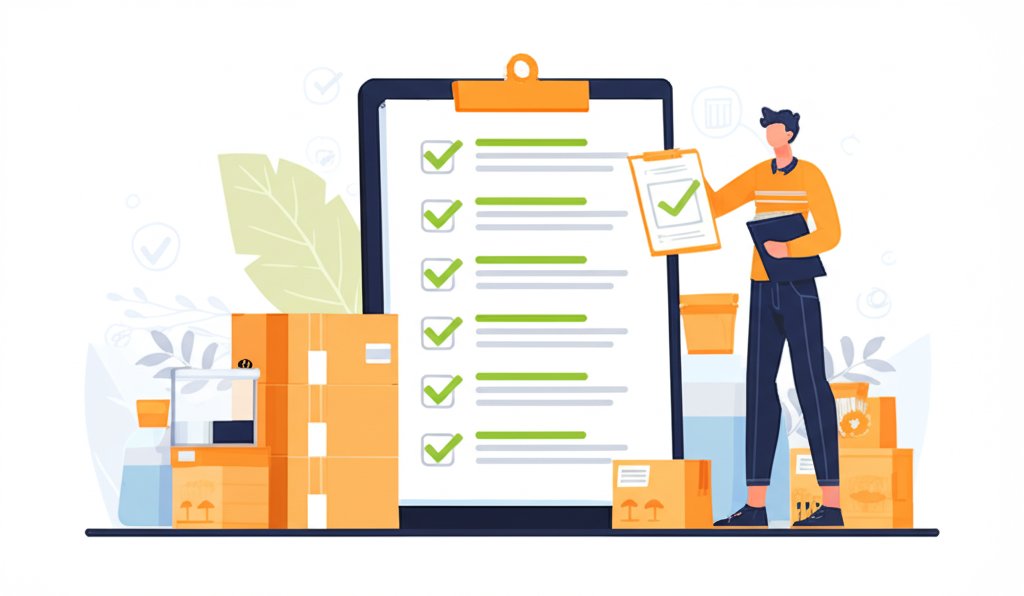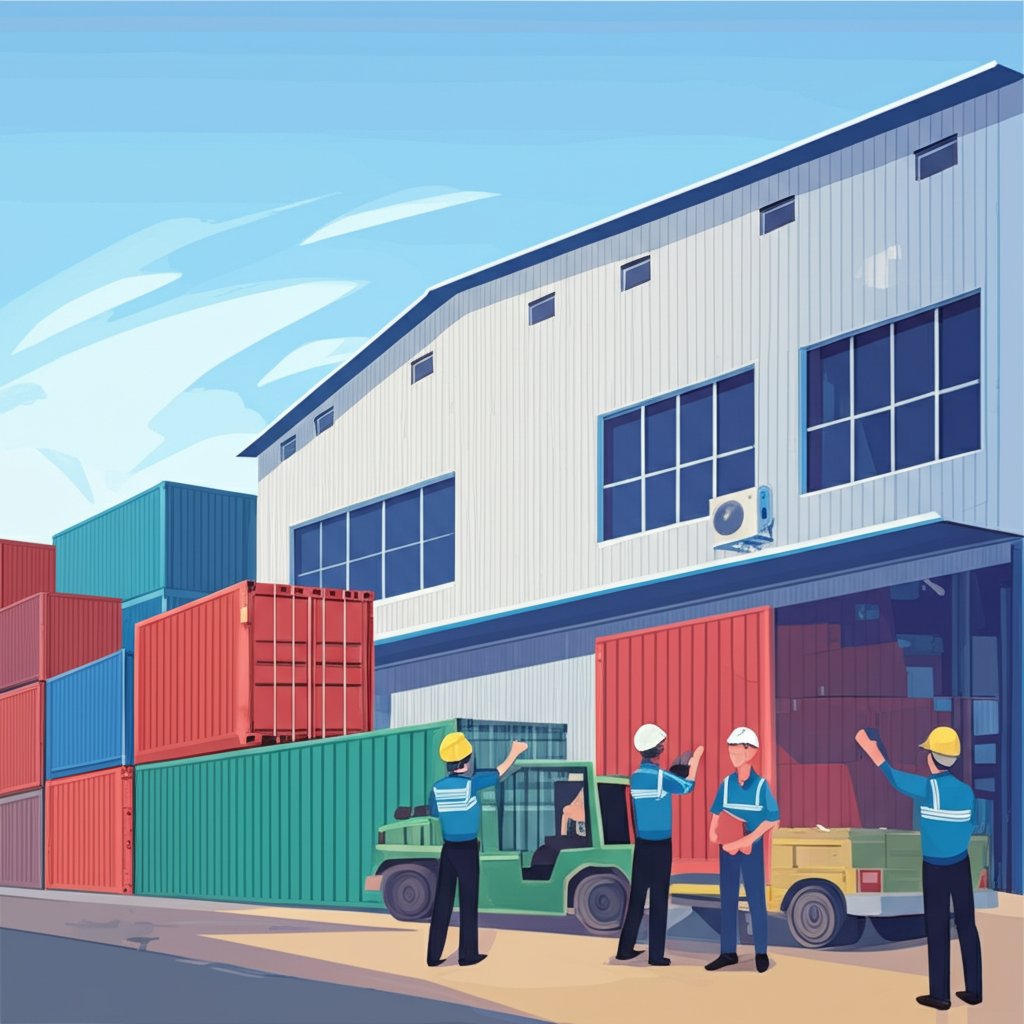
Introduction to Pre-Shipment Inspection: Your Last Line of Defense
Ever worried about receiving a shipment that doesn’t match your expectations—or worse, your customer’s? Imagine investing thousands into an overseas order, only to discover too late that the products are defective, mislabeled, or fail to meet safety standards. This is where pre shipment inspection steps in as your critical quality control checkpoint.
Pre-shipment inspection (PSI) is a systematic process carried out just before goods leave the manufacturer’s facility. It’s designed to verify that products meet all agreed-upon specifications, quality standards, and regulatory requirements. Typically conducted when at least 80% of an order is complete and packed, this inspection acts as the final safeguard, catching costly errors before they become your problem to solve(QIMA).
Sounds complex? In reality, PSI is about providing peace of mind. It ensures that:
- The right quantity of goods is ready to ship
- Products conform to your quality expectations and contract terms
- Packaging is secure and compliant for transit
- Regulatory and safety requirements are met, reducing customs delays
For both importers and exporters, pre shipment product inspection is more than a box-ticking exercise. It minimizes risks like defective-on-arrival claims, expensive returns, or damage to your brand’s reputation. In some cases, a PSI certificate is even required for customs clearance in certain countries, making it a legal necessity as well as a business best practice.
Throughout this guide, you’ll discover how PSI fits into the broader supply chain and why it’s essential for resilient, profitable international trade. Here’s what we’ll cover next:
- The role of PSI in strengthening supply chains
- Core inspection methods and procedures
- How to build a practical inspection checklist
- Certification and documentation essentials
- Choosing a reliable inspection agency
- Understanding and managing PSI costs
- Leveraging inspection reports for continuous improvement
- Special tips for inspections in China
- Key takeaways and next steps
With PSI as your last checkpoint, you’ll notice fewer surprises, more consistent quality, and a stronger bottom line—no matter where you source your products.

The Role of Pre-Shipment Inspection in Safeguarding Supply Chains
Imagine waiting months for a critical shipment, only to discover on arrival that a large portion of the goods are defective or don’t meet your specifications. What if you could catch these issues before the products ever left the factory floor? This is where pre shipment inspection becomes a game-changer for your business and your supply chain.
Why PSI Is Your Shield Against Supply Chain Disruptions
When you operate in today’s fast-paced, globally connected market, even a single batch of non-compliant or faulty products can trigger a domino effect—delays, costly returns, and even reputational damage. Industry experts highlight that pre-shipment inspections are the last and most effective opportunity to intercept defects before they become your responsibility. By systematically reviewing product quality, packaging, labeling, and regulatory compliance just prior to shipment, PSI acts as a vital risk filter in the supply chain.
“Pre-shipment inspections serve as the last line of defense against defective or substandard products reaching the hands of customers.”(GQC)
How PSI Minimizes Defective-on-Arrival Claims and Late Deliveries
Without PSI, businesses often face a harsh reality: defective goods only become apparent after arrival, leaving you to navigate expensive returns, rework, or even legal disputes. This is more common than you might think. For example, a European automotive importer avoided $86,000 in potential losses on a $430,000 order by investing just $1,000 in a pre shipment inspection. The inspection report flagged material discrepancies and visual defects before shipping, enabling corrective action at the source and preventing a costly post-arrival crisis.
PSI also helps reduce late-delivery risks. By catching quality or packaging problems before goods leave the factory, you avoid the cascading delays that come with rework or rejected shipments at customs. This proactive approach keeps your supply chain moving smoothly and reliably.
Direct Business Benefits of Pre-Shipment Inspection
When you consistently implement PSI, you’ll notice measurable improvements across your operations. Here are four key business benefits:
- Fewer returns and recalls: Catching defects before shipment means less time and money spent managing returns or warranty claims.
- Improved regulatory compliance: PSI verifies that products meet safety and labeling standards, reducing the risk of customs delays or legal penalties.
- Enhanced customer trust: Delivering quality products on time helps build a reputation for reliability, encouraging repeat business and referrals.
- Supply chain resilience: By minimizing surprises and disruptions, PSI strengthens your ability to respond to market demands and unforeseen challenges.
Think of pre shipment inspection as a strategic investment—not just an operational task. Over time, regular inspections lead to lower defect rates, smoother logistics, and a stronger brand presence in your market.
Next, we’ll break down the core methods behind effective pre shipment inspection and show you how to choose the right approach for your products and suppliers.
Core Methods That Drive Effective Pre-Shipment Quality Control
When you hear about pre shipment inspection, you might wonder: How do inspectors actually decide if a batch of goods is ready to ship? Are there universal standards, or does it all depend on the inspector’s judgment? To demystify the process, let’s break down the main methods of pre shipment inspection that ensure only compliant, high-quality products reach your customers.
Random Sampling & Acceptable Quality Level (AQL): The Statistical Backbone
Imagine you’ve ordered 1,500 reusable cups from a factory. Inspecting every single unit would be time-consuming and expensive. That’s why the pre shipment inspection procedure relies on random sampling, guided by the internationally recognized Acceptable Quality Level (AQL) system. AQL defines the maximum number of defective items considered acceptable in a batch, based on a statistical model. The higher your required quality, the stricter the AQL level you choose.
But how do you choose the right sampling plan? Here’s a quick snapshot of the three most common AQL plans:
| Plan Level | Sample Size | Acceptance Number |
|---|---|---|
| General Level I | Smallest (e.g., 50 units for a 1,500-unit order) | Lowest (e.g., 3 major defects allowed) |
| General Level II | Medium (e.g., 125 units for a 1,500-unit order) | Moderate (e.g., 8 major defects allowed) |
| General Level III | Largest (e.g., 200 units for a 1,500-unit order) | Highest (e.g., 13 major defects allowed) |
Level II is the most common choice for consumer goods, balancing cost and confidence. Level I is used when you have a trusted supplier or lower risk, while Level III is best for new suppliers or critical products (Insight Quality).
Visual, Functional, and Safety Checks: The Heart of Quality Control
Once samples are chosen, inspectors conduct a series of targeted tests and checks. Here’s what that looks like in practice:
- Visual Inspection: Each unit is reviewed for cosmetic defects—think scratches, dents, or paint flaws. Inspectors also verify workmanship, such as the quality of welding or stitching, and compare products to approved samples(Jonble).
- Functional Testing: Does the product work as intended? For electronics, this could mean powering on and checking all features. For apparel, it might involve testing zippers or buttons.
- Safety Checks: Inspectors perform tests to ensure products meet regulatory and safety standards. For example, they might check for sharp edges on toys or carry out electrical safety tests for appliances.
- Specification Verification: Dimensions, weight, materials, labeling, and packaging are measured and compared against your purchase order or technical documents(QIMA).
These steps are not just best practices—they’re often part of compulsory quality control and pre shipment inspection requirements, especially when exporting to markets with strict regulations.
Step-by-Step: The Typical Pre-Shipment Inspection Procedure
Wondering how it all comes together? Here’s a simplified rundown of a standard pre shipment inspection procedure:
- Preparation & Documentation Review: Inspector reviews your order details, product specs, and inspection checklist.
- Quantity Verification: Count products and cartons to confirm the correct quantity is ready for shipment.
- Random Sampling: Select samples based on the chosen AQL plan and batch size.
- Visual & Workmanship Inspection: Examine samples for cosmetic and manufacturing defects.
- Functional & Safety Testing: Test product performance, durability, and safety features as required.
- Specification & Packaging Checks: Verify dimensions, labeling, and packaging integrity.
- Reporting: Document all findings, classify any defects, and issue a pass/fail recommendation.
Each of these steps is designed to catch issues before they become costly problems, giving you the confidence that your order meets both your standards and those of your destination market.
Now that you understand the core inspection methods, the next step is to build a practical checklist that ensures nothing slips through the cracks—no matter how complex your product line.

Building a Practical Pre-Shipment Inspection Checklist
What Makes an Effective Pre-Shipment Inspection Checklist?
When you’re preparing to ship goods overseas, how do you make sure nothing gets overlooked? The answer is a well-structured pre shipment inspection checklist. Think of it as your quality assurance roadmap—covering every detail from product specs to packaging so you can catch issues before they become costly headaches.
Sounds straightforward, but what should you actually include? Let’s break down the essentials and show how each item aligns with specific defect categories, so your checklist delivers maximum value for every pre shipment product inspection.
Essential Fields Every PSI Checklist Should Include
Every product and industry is different, but the core elements of a robust checklist remain the same. Here’s what you should always cover:
- Product Specifications: Are the dimensions, materials, and features exactly as ordered?
- Quantity Verification: Does the shipment match the order quantity—no more, no less?
- Visual Appearance: Are there any scratches, dents, or visible defects?
- Functionality Testing: Does each item work as intended?
- Safety and Compliance: Has the product passed all required safety checks and regulatory standards?
- Packaging Integrity: Is the packaging secure, undamaged, and properly labeled?
- Labeling Accuracy: Are all labels correct, clear, and compliant with destination requirements?
- Documentation Review: Are manuals, instructions, and certificates included as needed?
Each of these checklist items helps inspectors systematically identify and classify defects as critical, major, or minor—ensuring nothing slips through the cracks (SafetyCulture).
Aligning Checklist Items with Defect Categories
Imagine inspecting a batch of electronics. If you only check for visible defects, you might miss internal faults that cause failures later. That’s why your checklist must tie each item to the types of defects most relevant for your product category. For example:
- Product Specifications catch critical design or material errors.
- Functionality Testing detects major performance failures.
- Visual Appearance highlights minor cosmetic flaws that could still impact customer satisfaction.
This targeted approach ensures you’re not just ticking boxes—you’re actively protecting your reputation and bottom line.
Sample Pre-Shipment Inspection Checklist Table
| Checklist Item | Rationale |
|---|---|
| Product Specifications | Confirms correct dimensions, materials, and features per order |
| Quantity Verification | Ensures shipment matches purchase order, preventing shortages or overages |
| Visual Appearance | Identifies scratches, dents, or cosmetic defects that affect quality perception |
| Functionality Testing | Verifies operational performance and detects non-working units |
| Safety and Compliance | Checks for adherence to regulatory and safety standards |
| Packaging Integrity | Prevents damage in transit by ensuring robust packaging |
| Labeling Accuracy | Reduces customs delays and misdeliveries by confirming correct labels |
| Documentation Review | Verifies inclusion of instructions, manuals, and required certificates |
Pro Tip: Tailor Your Checklist for Product-Specific Risks
While the table above covers universal essentials, don’t forget to customize your checklist for the unique risks of your product category. For example, add electrical safety tests for appliances, or allergen labeling checks for food products. The more targeted your checklist, the more effective your pre shipment product inspection will be (SourceGuy).
Looking to make your next inspection even easier? Consider using a digital or downloadable checklist template—many are available online and can be tailored to your specific needs. This not only streamlines the inspection process but also improves record-keeping and communication with your suppliers.
With your checklist in hand, you’re ready to ensure every shipment meets your standards. Next, we’ll explain what certification and legal documentation you’ll need to back up your inspection results and clear customs with confidence.
Meeting Certification and Legal Requirements Across Markets
Why Pre-Shipment Inspection Certificates Matter for Global Trade
Ever wondered what stands between your shipment and a customs delay—or even a costly rejection at the border? For many importers and exporters, that answer is the pre shipment inspection certificate. This official document, issued by an accredited inspection agency, proves that your goods meet quality, quantity, and regulatory requirements before leaving the country of origin(HQTS).
Sounds simple, but the stakes are high. In regions like Africa and Asia, customs authorities often require a valid inspection certificate for clearance. Missing or incorrect documentation can result in additional inspections, shipment confiscation, or goods being sent back. Even where not legally mandated, a PSI certificate is a powerful risk-reduction tool—offering assurance to both buyers and customs that your products comply with all agreed-upon standards.
Key Types of Pre-Shipment Inspection Certificates
- DGFT Appendix 2H: Required for certain exports from India, especially to countries that mandate pre-shipment inspection for customs clearance.
- CCIC (China Certification & Inspection Group): Often needed for exports from China to countries with specific import regulations, particularly in Africa and the Middle East.
- ISO-17020: Not a certificate but an accreditation standard. Agencies certified to ISO-17020 are recognized for their impartiality and technical competence in inspection activities, and their reports are accepted globally.
Each certificate type is issued by an independent, accredited agency and is tailored to the legal and commercial requirements of your target market. Without the right certificate, your goods may face unexpected hurdles at customs.
Pre Shipment Inspection Certificate Formats: PDF vs. Word
When it comes to documentation, format can make a real difference. Here’s what you need to know:
- PDF Certificates: The industry standard for official documentation. PDF files ensure consistent formatting, prevent unauthorized edits, and are widely accepted by customs authorities worldwide.
- Word Documents: Sometimes used for draft or editable versions, but not recommended for final, official submissions due to their ease of alteration.
For compliance and security, always request your pre shipment inspection certificate in PDF format from your inspection agency. This minimizes the risk of disputes or rejections during customs clearance.
Pre Shipment Inspection Report Format Essentials
The pre shipment inspection report format is just as critical as the certificate itself. A clear, comprehensive report provides transparency and can help resolve disputes, support claims, or satisfy regulatory requirements. Here’s what a robust report should include:
- Inspection date and location
- Product description and specifications
- Sample size and inspection method (e.g., AQL level)
- Findings on quality, quantity, packaging, and labeling
- Photographs of inspected goods and any defects
- Inspector’s conclusions and pass/fail recommendation
- Details of the issuing agency and accreditation
These elements ensure your report is accepted by stakeholders and authorities, providing a solid foundation for dispute resolution or compliance audits (Pazago).
| Document | Issuing Authority | Typical Use |
|---|---|---|
| DGFT Appendix 2H Certificate | Accredited Indian Inspection Agencies | Customs clearance for Indian exports to regulated markets |
| CCIC Certificate | China Certification & Inspection Group (CCIC) | Required for exports from China to certain African and Middle Eastern countries |
| ISO-17020 Inspection Report | ISO-17020 Accredited Third-Party Agencies | Globally recognized inspection results for quality assurance and compliance |
How to Ensure Fast, Compliant Certification
Imagine your shipment is ready, but you’re racing against the clock to meet a delivery deadline. Delays in inspection or incomplete documentation can quickly derail your plans. That’s why it pays to work with an experienced, accredited provider that understands both international standards and regional regulations.
If you need reliable, compliant documentation with quick turnaround, Eagle Eyes Quality Inspection offers PSI services backed by ISO 9001:2015 certification and deep expertise in global trade requirements. Their team provides official PDF certificates and detailed reports that satisfy both buyers and customs authorities, helping you clear regulatory hurdles and avoid costly delays.
With your certification and documentation in place, the next step is choosing the right inspection agency—one that can deliver both technical accuracy and local expertise, no matter where you source or ship your products.
How to Select an Inspection Agency You Can Trust
When you’re choosing among pre shipment inspection agencies, how do you know which one will truly protect your business interests? With so many pre shipment inspection companies promising quality control, the selection process can feel overwhelming—especially if you’re sourcing from overseas or entering a new market. Let’s break down the key factors that separate reliable partners from risky picks, so you can make a confident, informed decision.
What Sets a Trustworthy Inspection Agency Apart?
Imagine you’ve lined up a major shipment, but you’re unsure if your inspection partner can spot hidden defects or navigate local regulations. The best agencies combine technical expertise with a deep understanding of your target region and industry. Here’s what to look for:
- ISO 17020 Accreditation: This is the gold standard for third-party inspection agencies. Accreditation ensures the agency follows strict procedures, maintains impartiality, and is regularly audited by recognized bodies. Working with an ISO 17020-accredited agency means your inspection results will be respected by customs and buyers worldwide (OSSCertification).
- Qualified, Experienced Auditors: The agency’s inspectors should have technical backgrounds relevant to your product type—think engineers for machinery, textile specialists for garments, or food safety experts for perishables. Ask about their training and years of hands-on experience.
- Regional and Industry Expertise: Local knowledge matters. Agencies with teams on the ground in your sourcing region understand unique manufacturing challenges, language barriers, and regional regulations. For example, having inspectors based in China is a major asset for importers working with Chinese factories(Supplyia).
- Transparent Processes and Reporting: A trustworthy agency will clearly explain its inspection process, provide detailed sample reports, and offer fast turnaround—ideally within a single business day after inspection.
- Comprehensive Service Offerings: Top agencies go beyond basic visual checks. They should be equipped to handle functional testing, packaging verification, safety assessments, and even supplier audits if needed.
- Proven Track Record: Look for client testimonials, case studies, or references—especially from businesses in your industry or region. Real-world examples of problem-solving and issue resolution are a strong indicator of reliability.
Your Due-Diligence Checklist for Selecting an Inspection Partner
Not sure where to start? Use this practical checklist to evaluate your shortlist of pre shipment inspection agencies:
| ✔️ | Is the agency accredited to ISO 17020 or equivalent international standards? |
| ✔️ | Do their inspectors have proven expertise in your product category? |
| ✔️ | Can they provide local teams or regional experts where your goods are manufactured? |
| ✔️ | Are their inspection methods, sampling plans, and reporting processes clearly documented? |
| ✔️ | Do they offer comprehensive services, including functional, safety, and packaging checks? |
| ✔️ | Can they demonstrate a successful history with businesses like yours? |
Spotlight: Why Turnaround Time and Transparency Matter
Imagine discovering a defect after your shipment has already left port—it’s a scenario every importer dreads. That’s why agencies known for single-day reporting and transparent communication are so valuable. For instance, Eagle Eyes Quality Inspection stands out for their fast, detailed reports and clear pricing, helping clients act quickly and avoid costly surprises. Their inspectors are strategically located throughout China, making them an excellent choice for businesses sourcing in Asia and needing reliable, timely feedback.
Choosing the right inspection partner isn’t just about ticking boxes—it’s about protecting your reputation, your margins, and your peace of mind. Take the time to vet your options, and you’ll set your supply chain up for long-term success.
Once you’ve selected a trusted agency, the next step is understanding how inspection costs are structured—and how you can manage them without sacrificing quality. We’ll break down typical pricing models and cost-saving strategies in the next section.

Understanding and Reducing Pre-Shipment Inspection Costs
Ever wondered why the pre shipment inspection cost can vary so much from one shipment to the next? When you’re managing tight margins, even small differences in inspection fees can impact your bottom line. Let’s break down what goes into these costs, how different scenarios affect pricing, and what you can do to keep expenses under control—without sacrificing quality or compliance.
What Drives the Cost of Pre-Shipment Inspection?
Imagine you’re shipping a batch of electronics from India to Europe. The inspection process might seem straightforward, but several factors come into play when calculating your total pre shipment inspection cost. Here’s what typically influences the price:
- Type of Inspection: Visual checks are usually the most affordable, while functional tests or laboratory analyses (such as chemical composition or safety certifications) drive up costs due to specialized equipment and expertise (Pazago).
- Product Complexity: Simple goods like textiles require less time and fewer tests, making inspections cheaper. Complex products—think electronics or machinery—often involve detailed functional and safety checks, increasing the overall price.
- Location: Inspections in countries with higher labor costs (Europe, the US) are more expensive than those in Southeast Asia or Africa. Remote or hard-to-reach factories add travel expenses.
- Volume: Inspecting more units usually means a higher total fee, but bulk shipments may qualify for discounts on a per-unit basis.
- Inspector Expertise: Specialized inspectors or agencies with global accreditation (like ISO 17020) may charge more, but they provide assurance your pre shipment inspection report will be accepted worldwide.
- Urgency: Rushed or last-minute inspections often come with premium fees. Planning ahead helps you avoid these surcharges.
- Additional Requirements: Extra certifications, documentation, or compliance tests (such as CE marking or REACH for Europe) add to the base cost.
Comparing Typical Inspection Cost Scenarios
To give you a clearer sense of what to expect, here’s a table comparing three common scenarios:
| Service Type | Typical Cost (USD) | Potential Hidden Fees |
|---|---|---|
| Standard Visual Inspection (1 man-day) | 350 – 500 | Travel, local taxes |
| Functional or Specialized Inspection | 500 – 1,000+ | Lab testing, special equipment, certification |
| Rush/Urgent Service | +20–50% surcharge | Overtime, expedited reporting, priority booking |
For example, SGS India charges around 0.56% of the FOB value (with a minimum fee of USD 350) for standard inspections, while specialized or urgent services can push costs higher (Pazago). Always review the full fee schedule and clarify which expenses—like travel or additional tests—are included versus billed separately.
Smart Strategies to Reduce Your Inspection Expenses
Worried that inspection costs might eat into your profits? Here are three actionable tips to help you manage and lower your pre shipment inspection cost:
- Plan and Schedule Early: Avoid last-minute bookings, which often come with rush fees. Scheduling inspections in advance gives you more flexibility and better rates.
- Consolidate Shipments: If possible, combine multiple orders or products into a single shipment. This allows you to spread the inspection cost across a larger volume, lowering the per-unit fee.
- Choose the Right Inspection Level: Use AQL Level I for trusted suppliers with a strong track record, which reduces sample sizes and inspection time. Reserve stricter levels for new or high-risk suppliers to balance cost and risk(Pazago).
By understanding what goes into the pre shipment inspection cost and adopting these strategies, you can protect your bottom line while still ensuring your products meet all quality and compliance standards.
Next, let’s see how to turn your inspection reports into actionable insights for continuous improvement and supplier management.
Turning Inspection Reports into Continuous Improvement Wins
Ever wondered what happens after you receive your pre-shipment inspection report? Is it just a pass/fail verdict, or can it actually drive real improvements across your supply chain? The answer: A well-structured pre shipment inspection report format is more than a compliance checkbox—it’s a powerful tool for ongoing supplier management and corrective action.
How to Turn Inspection Findings into Action
When you open a PSI report, you’re not just looking at a snapshot of product quality. You’re seeing a roadmap for future improvement. Imagine your report highlights recurring packaging damage or a spike in cosmetic defects. Instead of simply rejecting the batch, you can use these findings to launch targeted Corrective and Preventive Actions (CAPA)—think process changes, retraining, or even supplier audits. Over time, this approach leads to fewer surprises, reduced costs, and stronger supplier relationships(QC Advisor).
Here’s how you can leverage your inspection results for continuous improvement:
- Corrective Actions: Address immediate issues by collaborating with your supplier to rework, repair, or replace non-conforming products.
- Preventive Actions: Use defect trends to update your inspection checklist, adjust production processes, or clarify quality expectations for future orders.
- Supplier Performance Reviews: Track which suppliers consistently meet standards and which need additional oversight or support.
- Feedback Loop: Share PSI findings with your team and suppliers to reinforce a culture of quality and transparency.
Sample Pre-Shipment Inspection Report Format
Wondering what a comprehensive PSI report should look like? A clear, actionable format makes it easier to spot issues and implement changes. Here’s a sample outline you can expect from a professional agency:
- Executive Summary: Pass/fail verdict and overall findings
- Inspection Details: Date, location, inspector name, and reference numbers
- Product Information: Description, specifications, quantities, and batch numbers
- Sampling Methodology: AQL level, sample size, and selection process
- Inspection Results: Visual, functional, and safety findings with defect classification
- Photographic Evidence: Images of products, defects, and packaging
- Recommendations & Next Steps: Suggested corrective actions, retest requirements, and supplier feedback
This structure ensures your pre shipment inspection report format is not only audit-ready but also actionable for both internal teams and suppliers(QIMA).
Key Metrics to Drive Supplier Improvement
Inspection reports are also a goldmine for tracking supplier performance over time. Two simple but powerful KPIs to monitor include:
- Defect Rate (%): Percentage of inspected items found with critical, major, or minor defects. Use this to benchmark suppliers and set improvement targets.
- On-Time Corrections: The proportion of corrective actions completed within the agreed timeframe. This measures your supplier’s responsiveness and commitment to quality.
By reviewing these KPIs after every PSI, you’ll quickly spot trends—whether a supplier is improving, slipping, or needs additional support. Over time, this data-driven approach transforms your inspection process from a reactive cost center into a proactive engine for quality and profitability.
Ready to put your inspection insights to work? In the next section, we’ll look at special considerations for pre-shipment inspections in China—where local regulations and factory schedules can add extra complexity to your quality control game plan.

Special Considerations for Pre-Shipment Inspections in China: Navigating Local Challenges and Compliance
When you source products from China, you might assume that a standard pre-shipment inspection will catch everything. But have you considered how local regulations, cultural nuances, and factory schedules can complicate the process? If you’re planning a pre shipment inspection china, understanding these unique factors is essential to avoid costly surprises and delays.
Regulatory Hurdles: Why CCIC and Local Licenses Matter
China’s export landscape is shaped by both national and destination-market regulations. One of the most notable requirements is certification by the China Certification & Inspection Group (CCIC). For certain product categories and destination countries—especially in Africa and the Middle East—a CCIC inspection certificate is mandatory for customs clearance. Failing to secure the right documentation can result in shipment holds, fines, or even re-exportation(JS Sourcing).
Additionally, only inspection agencies fully certified with an ASQIQ license are authorized to operate in China. These agencies, sometimes referred to as pre shipment inspection agencies psia, ensure your inspection results are recognized by both Chinese authorities and global partners. Always confirm your chosen agency’s credentials to avoid legal and logistical headaches(Insight Quality).
Factory Schedules: Timing Is Everything
Imagine booking your inspection only to find the factory closed for a week, or your shipment delayed by a backlog. In China, the production calendar is shaped by national holidays and peak manufacturing seasons. For example, Chinese New Year can trigger weeks-long shutdowns, while Golden Week and other festivals may disrupt schedules or create last-minute rushes.
To minimize risk, coordinate closely with your supplier and inspection agency. Confirm production and inspection windows well in advance, especially during high-traffic periods. Some agencies, like Eagle Eyes Quality Inspection, offer flexible scheduling and local teams to help you navigate these challenges efficiently.
Common Pitfalls When Conducting Pre-Shipment Inspection in China
Even experienced importers can stumble over issues unique to the Chinese manufacturing environment. Here are four common pitfalls to watch out for:
- New Year Backlog: Orders placed before the Spring Festival often face delays or rushed production, increasing the risk of quality lapses.
- Language Barriers: Miscommunication can lead to missed checklist items or unclear instructions for inspectors. Always provide clear, detailed requirements in both English and Chinese when possible.
- Regional Quality Variability: Different provinces and cities may have varying manufacturing standards. Choose an agency with on-the-ground expertise across major hubs like Guangdong, Zhejiang, and Jiangsu(JS Sourcing).
- Incomplete Inspection Scope: Skipping packaging, labeling, or safety checks can result in goods failing customs or disappointing end customers. Insist on a comprehensive, product-specific checklist tailored to your needs(Insight Quality).
How to Choose the Right Inspection Partner in China
With so many pre shipment inspection agencies psia operating in China, selecting the right partner is crucial. Look for agencies with:
- ASQIQ or CCIC certification for legal compliance
- Local teams in the region where your supplier operates
- Experience in your product category and industry
- Proven track record with detailed, timely reports
For example, Eagle Eyes Quality Inspection combines ISO 9001:2015 certification, local expertise, and rapid reporting to help importers avoid the most common pitfalls. Their China-specific case studies highlight real-world solutions for navigating regulatory requirements and factory bottlenecks, making them a valuable resource for anyone shipping from China.
By understanding China’s regulatory landscape and local challenges, you’ll be better equipped to plan inspections that protect your shipments and your bottom line. Next, we’ll wrap up with a summary of key takeaways and a practical checklist for getting started with PSI.
Conclusion: Secure Your Supply Chain with a Robust Pre-Shipment Inspection Checklist
When you think about the risks of global sourcing—missed deadlines, hidden defects, or costly returns—one question stands out: How can you consistently deliver quality and protect your margins? Pre shipment inspection offers a clear answer. By integrating this step into your process, you’re not just ticking boxes; you’re building a resilient supply chain and reinforcing your reputation for reliability.
What Are Your Next Steps for Effective PSI?
Imagine you’re preparing for your next big shipment. Where should you focus your efforts to maximize the value of PSI? Here’s a simple roadmap:
- Select a trusted inspection agency: Look for partners with proven expertise, local presence, and recognized certifications to ensure your inspections are thorough and compliant.
- Build a tailored pre shipment inspection checklist: Customize your checklist to fit your product’s unique risks and regulatory requirements, so nothing is overlooked during the inspection process.
- Budget smartly for PSI: Factor inspection costs into your planning early, and use cost-saving strategies like consolidating shipments and scheduling ahead to protect your bottom line.
By taking these steps, you’ll notice fewer surprises, stronger supplier relationships, and greater confidence in every shipment you send or receive. The result? Fewer returns, smoother customs clearance, and a healthier bottom line—all thanks to a proactive approach to quality control.
| Key Takeaways |
|---|
| PSI is your last line of defense against costly shipment errors and non-compliance. |
| A customized pre shipment inspection checklist ensures nothing slips through the cracks. |
| Choosing the right agency and budgeting early can significantly reduce risks and costs. |
| Consistent PSI builds trust, boosts customer satisfaction, and supports long-term growth. |
Ready to take action? Explore Eagle Eyes Quality Inspection’s resources to start building a more resilient, profitable supply chain today. Investing in PSI isn’t just good practice—it’s a strategic move that safeguards your business at every step.
Frequently Asked Questions About Pre-Shipment Inspection
1. What is a pre-shipment inspection and why is it important?
A pre-shipment inspection (PSI) is a quality control process conducted before goods leave the factory. It verifies that products meet your specifications, quality standards, and regulatory requirements. PSI helps prevent costly returns, customs delays, and brand reputation issues by catching defects and non-compliance before shipment.
2. How does the pre-shipment inspection procedure work?
The PSI procedure involves reviewing order details, verifying quantities, selecting random product samples using AQL standards, and performing visual, functional, and safety checks. Inspectors document findings in a detailed report, helping importers and exporters take corrective actions before goods are shipped.
3. What are the typical costs involved in pre-shipment inspection?
Pre-shipment inspection costs depend on factors like product complexity, location, inspection type, and urgency. Standard visual inspections usually range from $350 to $500 per man-day, while specialized or urgent services may cost more. Planning ahead and consolidating shipments can help reduce expenses.
4. What should be included in a pre-shipment inspection checklist?
A robust PSI checklist covers product specifications, quantity verification, visual appearance, functionality, safety compliance, packaging integrity, labeling accuracy, and documentation review. Tailoring the checklist to your product’s unique risks ensures thorough quality control.
5. How do I choose a reliable pre-shipment inspection agency?
Look for agencies with ISO 17020 accreditation, experienced inspectors, local expertise, transparent reporting, and a proven track record. For shipments from China, agencies like Eagle Eyes Quality Inspection offer certified services, local teams, and fast, detailed reporting to ensure compliance and quality.



